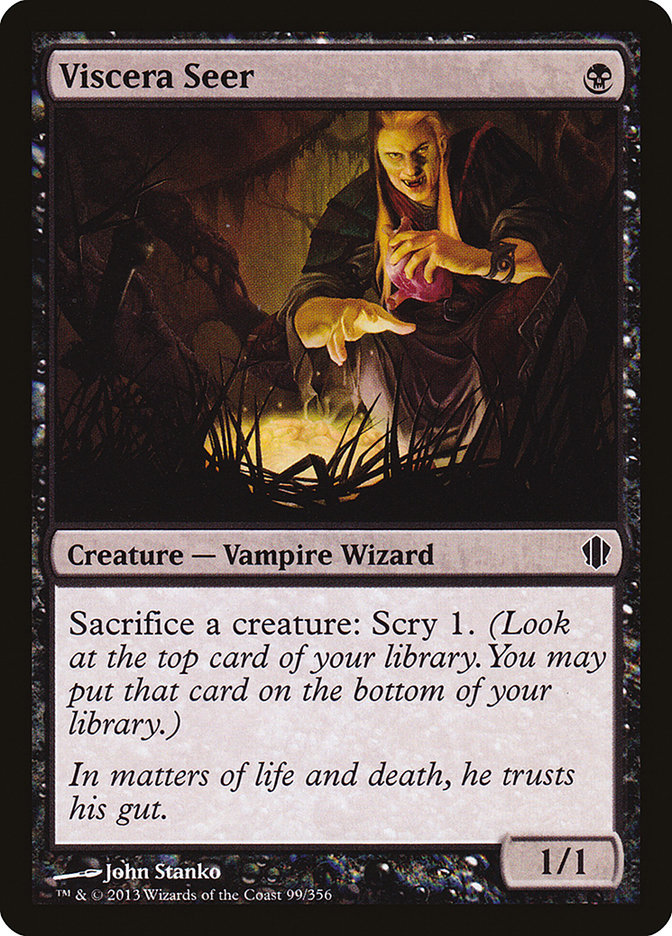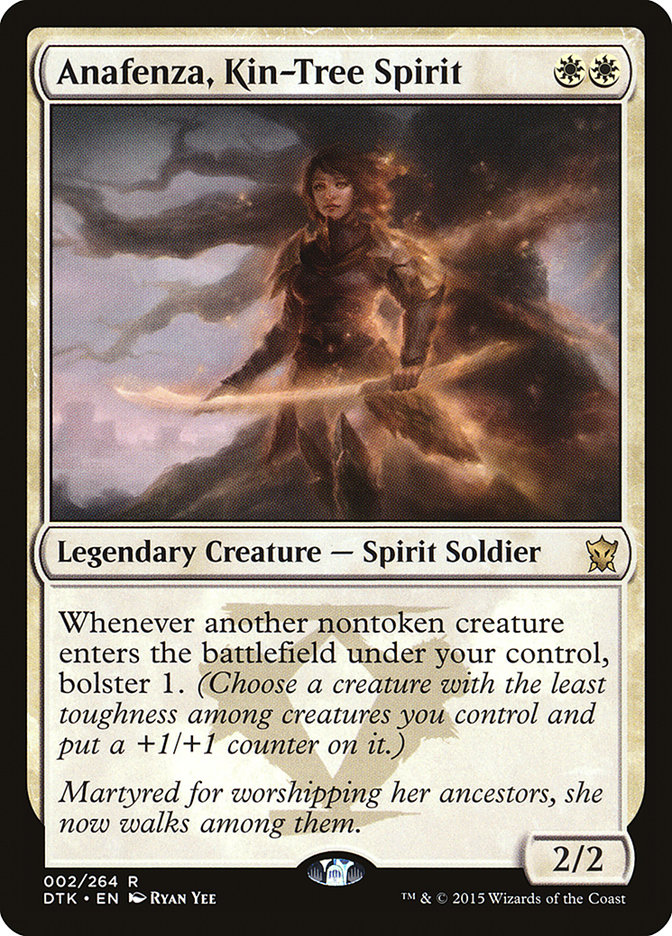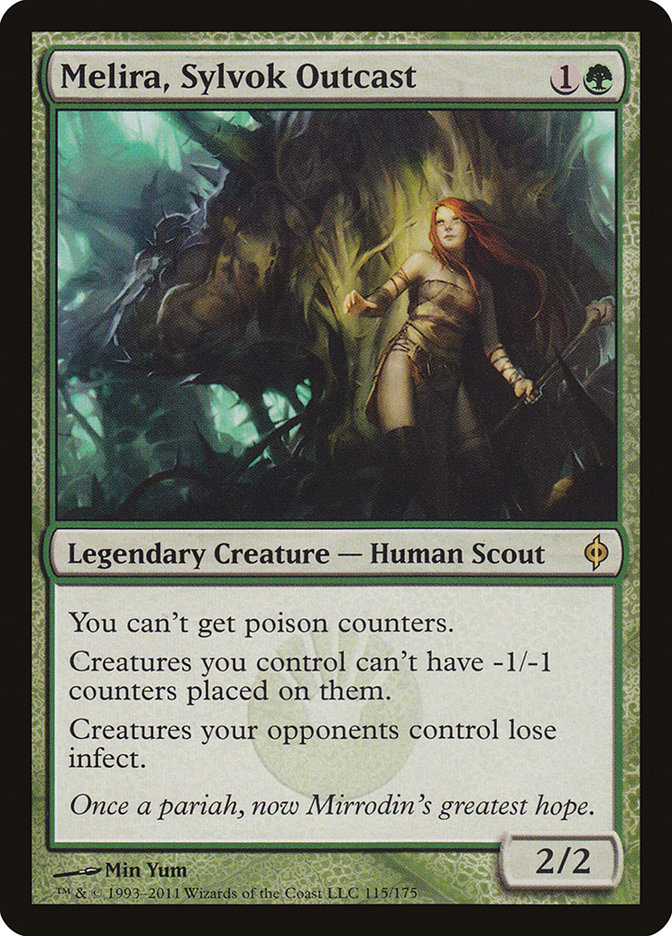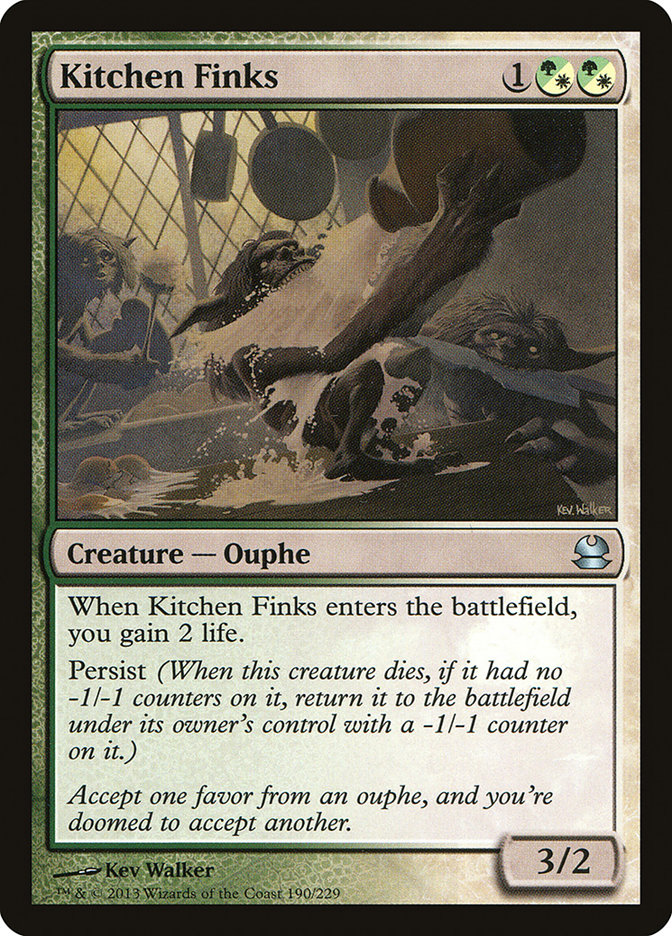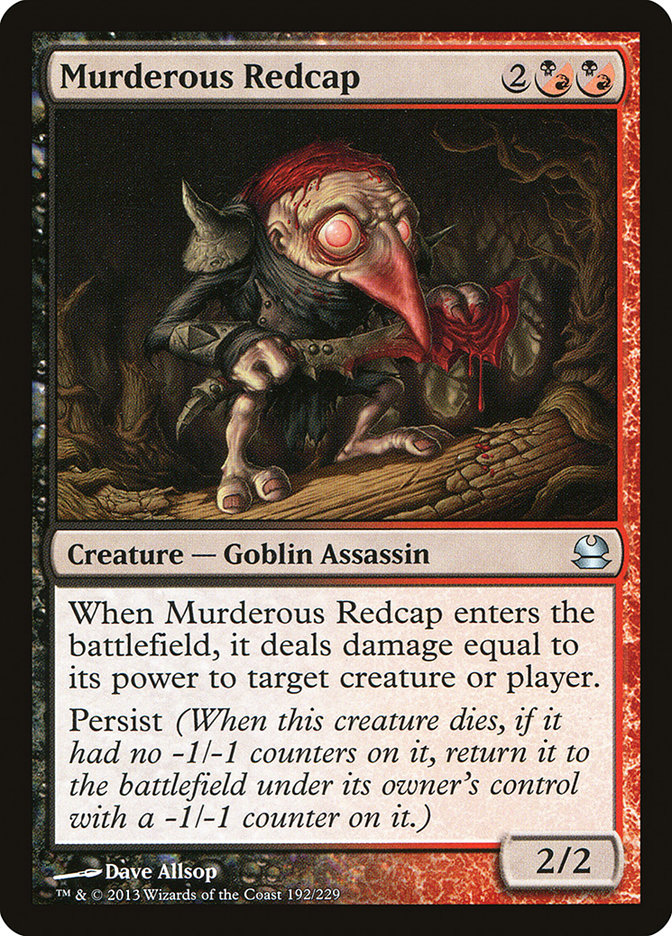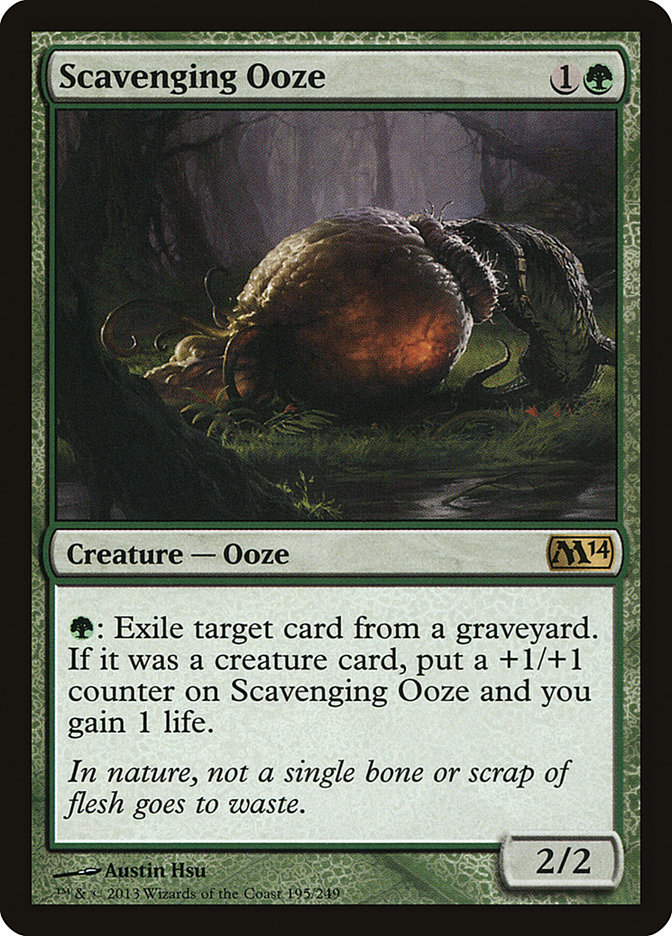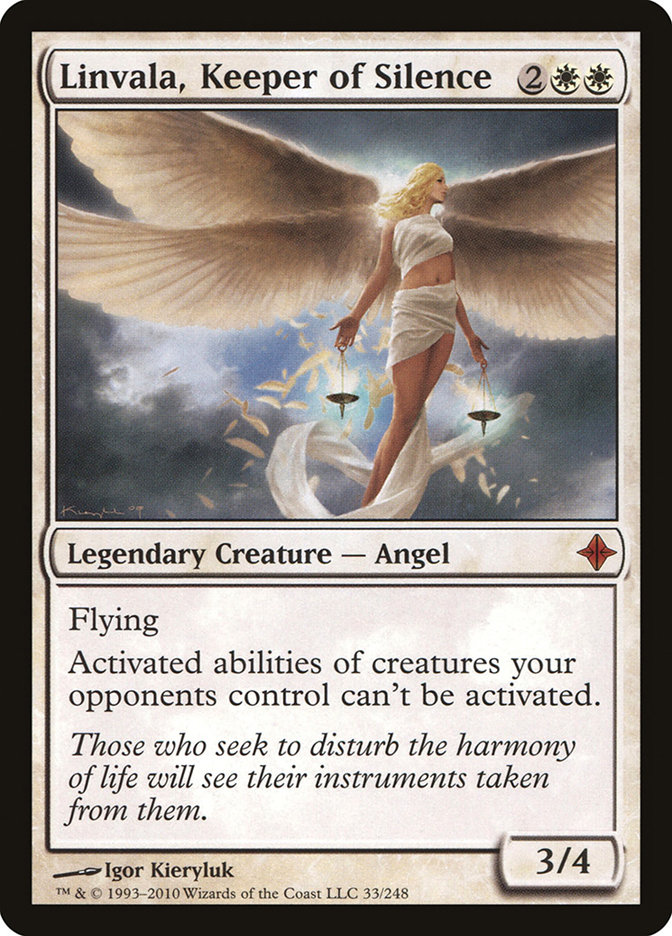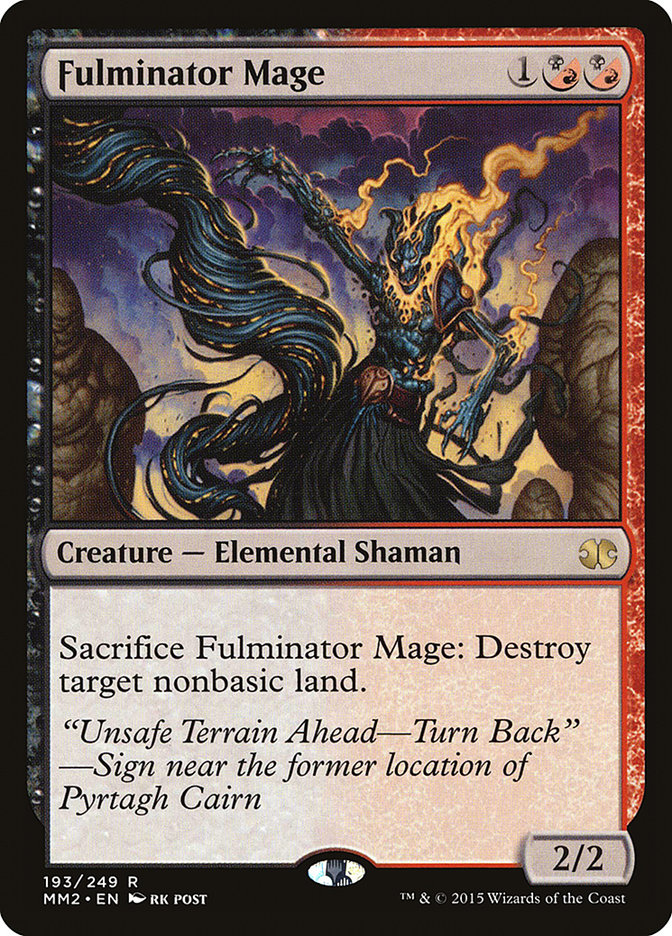You know what goes really well on those long, cold winter nights? Some hot CoCo. Hot CoCo is a great way to really feel warm and cozy inside when it’s
frightful and windy outside.
What’s that? It’s hot outside? It’s not winter time? Well, you got me. Let me try again! Do you know what goes really well in those warm summer days?
Spending some time with Company. Fraternizing with Company is a great way to share some fun moments and really feel great inside and out.
You know what my favorite way to handle a particularly hard and stressful situation is? It’s to remain calm and Collected. That’s right. I love not
freaking out, not making rash decisions, but instead approaching the situation with rational, Collected thoughts, leading toward a completely reasonable
course of action. I love that.
You know what my favorite archetype is in Modern? Collected Company. I love placing multiple copies of three or less CMC creatures from the top six cards
of my deck onto the battlefield. I just adore that. It leaves me with a bright smile and a blossoming sense of satisfaction at a job well done. It’s just a
really great thing.
You know what my favorite style of writing an article is? It’s to begin a paragraph by asking the reader a question, and then immediately answer that
question with flowery prose and an over the top response, sprinkled with a hint of sarcasm. I simply find it to be a sheer delight. I love it.
You know what my favorite way to stop starting every paragraph in this same infuriating way is? Trick question. None of the historical greats ever stopped.
They kept going, one infuriating paragraph at a time. Thankfully, I’m not a historical great, and I’m going to stop right now before I find myself face
down in a ditch for faceless butchering the English language.
Right. So Collected Company. Hell of a card, am I right? Of course I am. Collected Company is the bomb diggity. Collected Company and I have been two peas
in a birthing pod these past few weeks. Me, jamming infinite games of Collected Company in Modern on Magic Online. It, being an inanimate object getting
jammed on Magic Online. It was meant to be. It was destiny.
So what’s the skinny on Collected Company? I’m glad you asked. Mostly so that I could start yet another paragraph with a question, but also because I’m
here to provide you with that answer. I’m here to tell you the ins, outs, and no buts abouts Collected Company. First up, Collected Company isn’t skinny.
It’s phat. Lesson number one, right there. Write that down. It’ll be on the test.
I’d Like to Order the Combo Meal
Let’s just say that there are quite a few ways to collect some company when it comes to Modern. I’ll get right on addressing this as soon as I finish with
this phone call from Kitchen Finks. He’s calling collect. He says he’s the best three in the business. He’s quite persistent.
I think the best version of Modern Collected Company is the heavy combo version–the Kitchen Finks version. I spent a lot of time…a lot of
time…experimenting with more fair versions of the deck, and I simply found them lacking. While Collected Company was a powerful card, the rest of the
deck was simply just way too fair for my liking. Modern isn’t a very fair format. There are a bunch of powerful, hyper linear decks that prey on people who
are being too fair, and they are very punishing.
Either you’re playing Thoughtseize and Liliana to wreck your opponent’s game, or you’re doing something powerful yourself. It’s the only way to survive in
Modern. The combo version of Collected Company does something powerful. It’s able to assemble infinite life as early as turn 3, and it can do it early in
the game with surprising efficiency if left unchecked, thanks to Collected Company and Chord of Calling.
There are a number of combos this deck can assemble. Let’s break them down one by one.
Viscera Seer + Anafenza, Kin-Tree Spirit OR Melira, Sylvok Outcast + Kitchen Finks = Infinite Life
With either Anafenza or Melira in play, you can gain infinite life by using a Viscera Seer and a Kitchen Finks. You sacrifice Kitchen Finks to Viscera
Seer, which will cause Kitchen Finks to come back into play with persist. You’ll gain two life. With Melira in play, it doesn’t come back with a -1/-1
counter on it, and you can repeat the process until you’ve gained infinite life and scryed through the entire deck. With Anafenza in play, it does come
back with a -1/-1 counter, but you can bolster onto the Kitchen Finks (which will always be your smallest creature, barring Little Girl shenanigans) to
reset it, allowing you to repeat the process.
Viscera Seer + Anafenza OR Melira + Murderous Redcap = Infinite Damage
In the same vein, using a Murderous Redcap instead of a Kitchen Finks with the Viscera Seer and Melira or Anafenza pairing allows you to deal infinite
damage in the form of intervals of two damage from Redcap. This pairing can also beat things like multiple Soul Wardens by first killing all of your
opponent’s creatures and then shooting them for two damage until they perish.
Viscera Seer + Anafenza + Melira + Kitchen Finks = Infinite Life and Infinitely Large Creatures
In the above examples, having either Melira or Anafenza would allow you to pull off a combo. This combo requires having both Melira and Anafenza at the same time.
When you sacrifice a Kitchen Finks to Viscera Seer with both of these creatures in play, the Kitchen Finks returns without a -1/-1 counter on it thanks to
Melira, yet you still get to put a bolster trigger on the stack thanks to Anafenza.
To make your creatures arbitrarily large, you have to do a bit of stack manipulation. The way the stack works is that the first item on the stack is the
last one to resolve. You start the combo off by sacrificing Kitchen Finks to Viscera Seer. In this case, the first item on the stack is Viscera Seer’s scry
ability. When operating this combo, you don’t get to scry with Viscera Seer at all until the entire combo is done. Afterward, you will be able to resolve
infinite scry 1 triggers.
The other item to go onto the stack is Kitchen Finks persist trigger. Allow this to resolve, bringing Kitchen Finks back into play, which will put two more
triggers onto the stack, both still above Viscera Seer’s scry.
The next two items on the stack are going to be the lifegain trigger from Kitchen Finks and the bolster trigger from Anafenza. You can resolve the lifegain
trigger and gain two life, but don’t resolve the bolster trigger yet. Instead, sacrifice Kitchen Finks again in response to repeat the process. Resolve the
lifegain trigger, but not the bolster trigger. Repeat this process an arbitrarily large number of times, generating infinite life and putting infinite
bolster triggers on the stack.
At the end of the combo, the stack should look like: Viscera Seer scry -> Anafenza bolster -> Viscera Seer scry -> Anafenza bolster -> Viscera
Seer scry -> Anafenza bolster… a very large number of times. Once you let all of these resolve, you get to scry through your entire deck like you
normally would and you also get to bolster infinitely onto your creatures, making them all very large.
It’s important that you execute the combo in this fashion, however. If you resolve the bolster trigger from Anafenza before you sacrifice the Kitchen Finks
again, then you are just going to keep bolstering onto Kitchen Finks and not accomplish anything since it will always be the smallest creature in play when
it comes back. You have to sacrifice the Kitchen Finks before you let the bolster resolve to execute this combination.
Anafenza + Melira + Murderous Redcap = Infinitely Large Creatures
This is the only combo that doesn’t involve Viscera Seer. And well, if you had Viscera Seer to go along with these fine creatures, you could just kill your
opponent with the infinite damage combo. With both Anafenza and Melira in play, you can use Murderous Redcap to shoot itself over and over again. Much like
the above combo, don’t resolve any of the bolster triggers until you’ve repeated this process an arbitrarily large number of times. Put a bolster trigger
on the stack, have Redcap shoot itself, enter the battlefield, put another bolster trigger on the stack, shoot itself again, etc. After you’ve executed
this combo as many times as your heart desires, you can resolve all of the bolster triggers, which will make even your smallest creatures notoriously big.
I got to execute this combo in a really sweet way on Magic Online. I drew an Anafenza when I had a Melira and a Murderous Redcap already in play against
Tron. I cast the Anafenza and then sent my Murderous Redcap exploring into my opponent’s Wurmcoil Engine. He blocked, Redcap came back, shot itself a bunch
of times, and after about seven minutes of clicking, I had a bunch of 7/7 creatures in play.
In real life, they would have been infinitely large, but you can’t really do that on Magic Online. It’s definitely one giant drawback of playing this deck
online. I’ve lost a lot of games where I’ve assembled the combo to gain infinite life against a deck without any way to beat it, but since you can’t
actually gain infinite life on Magic Online, I just have to go up to like 70 life and then eventually lose. I’ve also lost a number of games to timing out
because I couldn’t execute the combo fast enough to win. It’s a pain, but it’s the pain we go through to get to play with Collected Company at 2 am without
pants on.
And speaking of Collected Company, what does a combo-oriented Collected Company deck even look like? There are a few ways you can build it. The first is to
place single-minded emphasis on doing everything you can to assemble the combo.
Creatures (29)
- 4 Birds of Paradise
- 3 Eternal Witness
- 1 Wall of Roots
- 4 Kitchen Finks
- 1 Murderous Redcap
- 3 Noble Hierarch
- 1 Linvala, Keeper of Silence
- 3 Viscera Seer
- 3 Spellskite
- 2 Melira, Sylvok Outcast
- 1 Scavenging Ooze
- 1 Fiend Hunter
- 2 Anafenza, Kin-Tree Spirit
Lands (22)
Spells (9)

By playing many copies of each of the combo pieces, it increases the chances of naturally finding a combo or hitting one off of Collected Company. Having
access to a lot of Spellskites not only gives us protection against a number of strategies, including Splinter Twin, Infect, and G/W Hexproof, but it also
can protect our combo pieces from removal spells against the more fair decks in the format. Even against decks like Affinity, Spellskite is able to block
Etched Champion and can also soak up Galvanic Blasts or prevent Arcbound Ravager from moving its counters onto anything other than the Spellskite.
One nifty trick when you have multiple copies of Chord of Calling in hand is that you almost always want to use creatures like Kitchen Finks and Murderous
Redcap to pay for the convoke cost of Chord of Calling. The reason for this is that you can use Viscera Seer to sacrifice them, causing them to return to
the battlefield untapped, which will allow you to use them again to cast another Chord of Calling.
A lot of people have referred to this deck as the second coming of Pod, but the more I’ve played with the deck, the less and less I believe that to be
true. This deck isn’t really at all similar to Pod except for the kinds of creatures it plays. Birthing Pod was a deck that was designed to value your
opponent out of the game, but that could occasionally pull off an infinite combo given enough time or the right resources at the right time. The primary
gameplan of Pod was to win with the card advantage provided by Birthing Pod.
The primary gameplan of this deck is to combo kill your opponent. It can actually be kind of hard to win a fair game of Magic with this deck sometimes
because of how anemic all the creatures are. Sure, there is Gavony Township, but I’m almost at the point of cutting Township from the deck because of how
rarely I use it and how frequently it screws me out of curving out properly.
I’m constantly thinking about how I can set up a combo with this deck, and I tend to play defensively with my creatures in most games of Magic, relying on
a combo finish to get the job done.
If that’s the case, why don’t I play more combo pieces? Why only three Viscera Seer? Why not extra copies of Anafenza or Melira?
Every time I’ve played more than three Viscera Seer I’ve regretted it instantly. The card doesn’t scale well in multiples, and you never really want to see
more than one per game. Even if they kill it, it’s very easy to recur a Viscera Seer with one of the three copies of Eternal Witness. One easy way to lose
with this deck is to just do nothing, and having too many copies of Viscera Seer certainly helps this deck not do anything. The same could be said for
cards like Spellskite, but Spellskite at least can disrupt your opponent’s gameplan in the meantime.
Speaking of Eternal Witness, most of my lists have had four copies. Only recently I’ve trimmed down to 2-3 copies because the card can sometimes be pretty
slow. Eternal Witness is a great way to rebuy dead combo pieces, but it’s also a fantastic card to hit off of Collected Company, because it allows you to
immediately get the Collected Company back into your hand. It’s pretty sweet to be able to Collected Company and find one combo piece and an Eternal
Witness, allowing you to cast Company again the next turn to find a missing combo piece. This kind of card advantage also lets you grind really well
through a lot of removal and also is the way for the deck to win fair games of Magic when the combo pieces aren’t coming or are getting disrupted.
I have two Path to Exile in the maindeck because it’s important to be able to handle cards like Scavenging Ooze and Olivia Voldaren. Scavenging Ooze is the
single best card in the format against this deck because it’s impossible to execute any of the combos with Ooze in play. Scavenging Ooze can simply exile
Kitchen Finks or Murderous Redcap with the persist trigger on the stack.
Scavenging Ooze is simply one of the best cards in Modern, period. It messes with Tarmogoyf, Snapcaster Mage, and a number of other cards and strategies.
It’s simply so good that we are playing it ourselves in our combo deck even though it provides no natural synergies, just because sometimes you want to be
able to Chord for an Ooze to take over a game.
On a similar vein, Fiend Hunter and Linvala, Keeper of Silence provide us with ways to deal with a Scavenging Ooze (even if only temporarily) to free up
our combo. Fiend Hunter is a card that has gone in and out of my lists, and I’m still not sold on it, but Linvala is a card that is simply insane.
I have a second Linvala in the sideboard because of how powerful it is against the field right now. I’ve been wanting to make room for the second Linvala
in the maindeck for a while now, but I haven’t pulled the trigger on it. Linvala shuts down the Twin Combo and she blanks Ooze, Grim Lavamancer, and Olivia
Voldaren against Jund. She shuts down almost every single creature in the mirror and against Elves, including preventing mana creatures from generating
mana, and she also has occasional value against other decks. For example, Linvala stops Steel Overseer and Arcbound Ravager from doing anything in
Affinity, which is actually extremely relevant. Whenever I cast Linvala, I like to say that I’ve achieved “Linballa status.” And to be fair, I have.
Fulminator Mages are a recent addition to the sideboard. I’m just sick of losing to Tron and Amulet Bloom, so now we’re going to give them a full helping
of the Fulminator. Like, they can go back for seconds or thirds if they want, even before everyone has finished going up for firsts. That’s how much of a
full helping they can get. With Collected Company to find them and Eternal Witness to buy them back, I won’t be satisfied unless they end the game with
nothing except a basic Forest in play.
I’m going to be frank for a second. Those decks suck. They are awful to play against. They suck all of the fun out of Magic. There is nothing good about
Tron. It has zero redeeming qualities. Do you know how bad I will feel if I reduce my Tron opponent to having zero permanents in play and then cast Eternal
Witness to rebuy a Fulminator Mage, just in case they draw another land?
I won’t feel bad at all. I will feel great. Justice will be served. They will get a chance to feel the same feeling they’ve been giving everyone else all
these years. No remorse. If they get on their hands and knees, repent, and beg forgiveness, then maybe I will apologize. Not for destroying all of their
lands…I would never apologize for that…but apologize that it took so long for someone to show them the truth.
Repeat after me. “There is nothing good about Tron. There is nothing good about Tron. Tron has no redeeming qualities. Tron sucks all the fun out of Magic
and has no place in this game.”
It’s time we punished people who thrive on punishing others. It’s time for the glass to be half-Fulminator.
And yes, I’ve played Tron before, but I regret that decision and consider that to be a dark time in my life. We all make mistakes in our life. It’s
important to be able to move on and not let them define us. [CEDitor’s Note: I’m at a loss for words.]
Tidehollow Sculler may seem like an odd inclusion in the sideboard, but it has performed surprisingly well for me. It’s a great piece of disruption against
decks that are trying to do powerful, linear things, but that don’t have a lot of removal spells. It’s a great card for the mirror, Amulet, Tron, etc. You
can also Collected Company on your opponent’s draw step and sometimes snipe a card from their hand before they have a chance to cast it. That’s just value.
The last card I want to mention is Burrenton Forge-Tender. This card is phenomenal against cards like Pyroclasm and Anger of the Gods. Those kinds of cards
are absolutely backbreaking against this deck, but Forge-Tender provides an easy and cheap way to counter them, especially if you have access to Chord of
Calling. Just be wary that Forge-Tender can’t counter Skullcrack or any spells or damage dealt after Skullcrack.
Creatures (29)
- 4 Birds of Paradise
- 3 Eternal Witness
- 4 Kitchen Finks
- 1 Murderous Redcap
- 3 Noble Hierarch
- 1 Linvala, Keeper of Silence
- 3 Viscera Seer
- 1 Spellskite
- 2 Melira, Sylvok Outcast
- 2 Scavenging Ooze
- 3 Voice of Resurgence
- 2 Anafenza, Kin-Tree Spirit
Lands (22)
Spells (9)

Here’s another list that isn’t as all-in on the combo. It still has the same number of combo pieces, but instead of relying on Spellskite as protection, it
plays Voice of Resurgences to give it a better grindy gameplan. This deck can actually win grindy games thanks to giant Voice of Resurgence tokens and
Gavony Township. This version doesn’t care as much about getting combo pieces killed and is more interested in just presenting a wealth of threats.
I think this version might be a little bit worse, but I’m not actually sure, and I keep waffling between the two.
One thing that is important to keep in mind when playing with cards like Spellskite and Tidehollow Sculler is that they are artifacts and thus, present a
natural vulnerability to Kolaghan’s Command, which is now one of the most powerful cards in Modern. I don’t side in Sculler against Kolaghan’s Command
decks.
It’s also important to note that if your opponent chooses to deal two damage to a creature and destroy target artifact, choosing your Spellskite, you can
actually redirect the two damage to your Spellskite. In that regard, Command is only a one-for-one, but a savvy opponent can just destroy your Spellskite
and make you discard a card or return a creature to hand.
I also side into Orzhov Pontiff against Jund because it destroys Dark Confidant and Grim Lavamancer, which are both super annoying. Pod was good at beating
Dark Confidant because you could just easily Pod into Redcap or just beat them by generating more advantage than even their two cards a turn could.
Collected Company can’t beat Dark Confidant in the same way at all. Bob must die.
Bonus! Value Collected Company
I’ve spent a lot of time working on lists trying to make these non-combo-oriented Collected Company decks work, but I haven’t been successful. So far the
most successful takes have been decks that have been both aggressive and disruptive.
Creatures (26)
- 4 Birds of Paradise
- 4 Tarmogoyf
- 4 Tidehollow Sculler
- 3 Noble Hierarch
- 3 Knight of the Reliquary
- 2 Linvala, Keeper of Silence
- 3 Voice of Resurgence
- 3 Anafenza, the Foremost
Lands (22)
Spells (12)

This deck has been fun, but I haven’t found it to be as good as just playing the combo version of the deck. It’s like playing Abzan Midrange when you could
play Abzan Reanimator in Standard of years past, or even playing Abzan Midrange when you could have just been playing Pod in Modern a year ago.
I’m sure there is a way to build an aggro Collected Company deck that is good enough to outclass just playing the combo version or even just outclass
playing a different deck altogether, but I haven’t found it yet. I’ve seen a number of people doing reasonably well with a Naya Company deck featuring
Lightning Bolt, Path to Exile, Collected Company and then a bunch of creatures like Wild Nacatl, Knight of the Reliquary, Tarmogoyf, and Loxodon Smiter. It
just doesn’t seem like it’s powerful enough to me, though.
One card I do really like right now is Mirran Crusader. It dies to Lightning Bolt, like it always did, but it has protection from most other removal and
most other creatures in the format right now. It can’t be killed by Terminate, Abrupt Decay, or Olivia Voldaren, and it swings past Scavenging Ooze,
Tarmogoyf, Kitchen Finks, and almost everything else.
I feel like there could be a pretty sweet deck that looks like this:
Creatures (26)
- 3 Birds of Paradise
- 4 Tarmogoyf
- 4 Noble Hierarch
- 4 Knight of the Reliquary
- 2 Qasali Pridemage
- 4 Mirran Crusader
- 2 Scavenging Ooze
- 3 Ghor-Clan Rampager
Lands (22)
Spells (12)

It’s basically just the Naya Collected Company deck that players like Brian Kibler have been championing, the one I didn’t think was powerful enough, but
relies on Mirran Crusader and exalted along with Wilt-Leaf Liege and Kessig Wolf Run to turn Mirran Crusader into a really brutal clock. I think Loxodon
Smiter is pretty mediocre right now, but Mirran Crusader is a card I can get behind. It kills fast and is hard for some decks to kill. It may turn out to
be a bust, but this is the kind of Naya shell I would start with.
That’s all I have on Collected Company for now, but I’ve got another hot date with Magic Online today, so you can make the safe bet that this isn’t the end
for me and Company. There is more data to Collect and more Company to entertain. I’m going to be putting in every legal creature in Modern into play,
except the kitchen sink. And then I’m going to put in Kitchen Finks. That’s the game.


